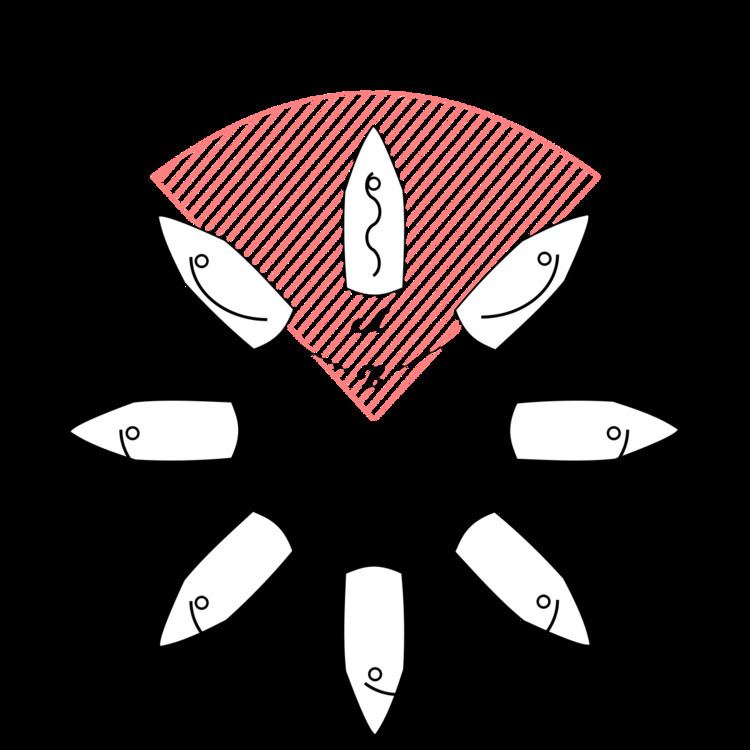 | ||
Point of sail is a sailing boat's orientation in relation to the current wind direction.
Contents
No-go zone
Sailboats cannot sail directly into the wind, nor on a course that is too close to the direction from which the wind is blowing. The range of directions into which a boat cannot sail is called the "no-go" zone. When attempting to sail into the no-go zone, the boat's sails do not produce enough drive to maintain way or forward momentum through the water. Therefore, the boat will eventually coast to a stop, with the rudder becoming less and less effective at controlling the direction of travel. The size of the no-go zone varies, but all sailboats have one. Its width depends on the design of the boat, its rig, and its sails, as well as on the wind strength and the sea state. Depending on the boat and the conditions, the no-go zone may be from 30 to 50 degrees either side of the wind, a 60- to 100-degree area centered on the wind direction.
In irons
A sailboat is said to be "in irons" if it is stopped and pointing directly into the wind (head-to-wind). If the boat attempts to tack too slowly, or otherwise loses forward motion while heading into the wind, the boat will coast to a stop and the lack of water flow over the rudder will cause the sailor to lose the ability to steer the boat. This is also known as being "taken aback," especially on a square-rigged vessel whose sails can be blown back against the masts.
Close-hauled
A boat is said to be sailing close-hauled (also called beating or working to windward) when its sails are trimmed in tightly and its course is as close to the wind as it can sail efficiently. This point of sail lets the boat travel diagonally to the wind direction, or 'upwind'.
Reaching
When the wind is coming from the side of the boat, this is called reaching.
A "beam reach" is when the wind is at a right angle to the boat.
A "close reach" is a course closer to the wind than a beam reach but below close-hauled. i.e. any angle between a beam reach and close-hauled. The sails are trimmed in, but not as tight as for a close-hauled course.
A "broad reach" is a course further away from the wind than a beam reach but above a run. In a broad reach, the wind is coming from behind the boat at an angle. This represents a range of wind angles between beam reach and running downwind. The sails are eased out away from the boat, but not as much as on a run or dead run (downwind run).
Running downwind
On this point of sail (also called running before the wind), the wind is coming from directly behind the boat. Running can be dangerous to those on board in the event of an accidental jibe.
When running, the mainsail is eased out as far as it will go. The jib will collapse because the mainsail blocks its wind, and must either be lowered and replaced by a spinnaker, or set instead on the windward side of the boat. Running with the jib to windward is known as 'gull wing', 'goose wing', 'butterflying' or 'wing and wing'. A genoa gull-wings well, especially if stabilized by a whisker pole, which is similar to but lighter than a spinnaker pole.
